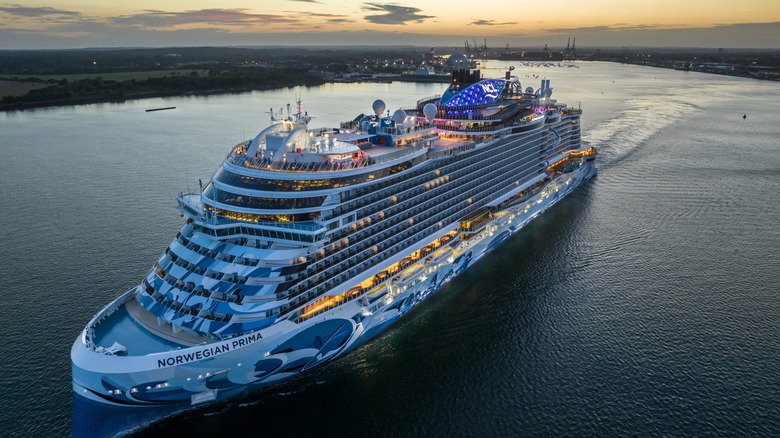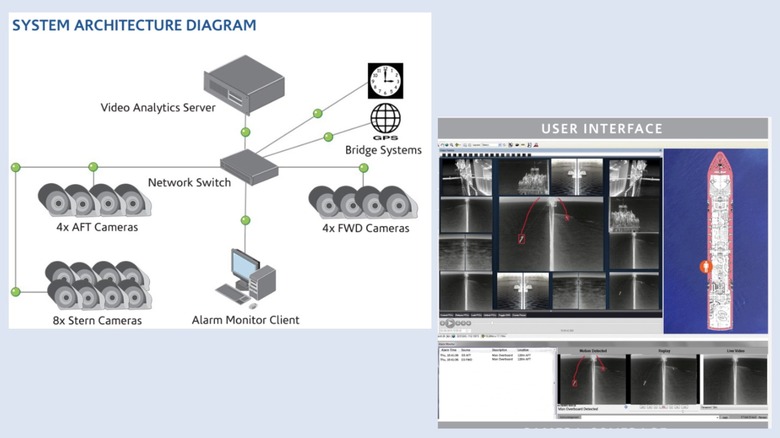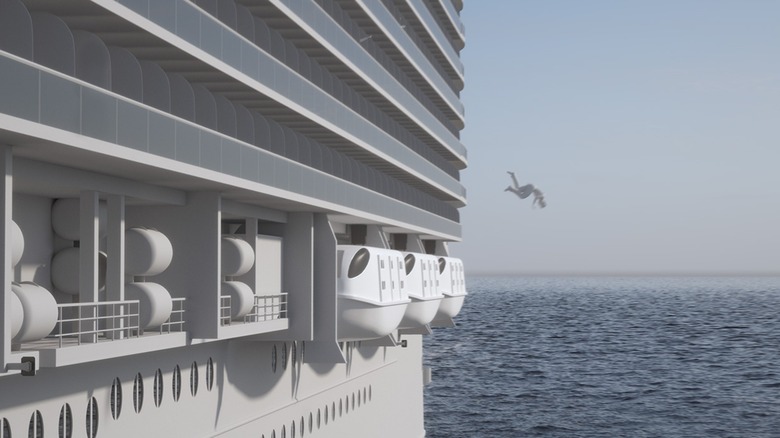What Technology Is Used In A Cruise Ship's Overboard Detection System?
On June 29, 2025, a child aboard a Disney Cruise Line ship fell overboard from the walking track found on deck four. Her father dove into the water to save her immediately after, prompting the ship's man overboard (MOB) systems to jump into action, alerting the crew of the incident. Within a few minutes, lifepreservers and rescue boats aboard the cruise ship were deployed to save them. This was not an isolated incident. In 2023, it was reported that on average, 19 passengers go overboard on cruise ships each year.
Despite the hazard, not all cruise ships come equipped with the MOB system that saved two lives on the Disney vessel. Cruise ships are expected to install certain safety systems, but due to lax enforcement protocols and improper checks, the life-saving tech is still not a universal sight on ships. The Cruise Vessel Security and Safety Act of 2010 mandates that passenger vessels follow certain construction standards to ensure passenger safety, such as high rails, security latches, and time-sensitive tools like those to prevent overboard accident casualties.
The law states, "The vessel shall integrate technology that can be used for capturing images of passengers or detecting passengers who have fallen overboard, to the extent that such technology is available." So, how exactly do these systems work? Think of them as a sensing kit that includes cameras, radars, and an integrated alarm system. It's sophisticated technology that can cost roughly $200,000.
How MOB sensors work?
Man overboard systems are crucial, not just as a preventive measure, but in light of casualties and the lives that could have been saved over the years. There were more than 200 such accidents reported between 2009 and 2019, yet only 48 were successfully rescued. That's where systems like MOBtronic by Marss come into the picture. This MOB system comes equipped with micro radars and thermal cameras fitted inside a portable kit linked to video analytics and data processing capabilities.
Crowned as the best product at the IHS Safety At Sea Awards 2018, MOBtronics entails multiple sensing units installed around the vessel's external body, especially close to accident-prone regions, such as railings. Once it detects activity resembling a person falling overboard (or climbing in dangerous areas), it collects fall direction, shape of the detected object, and speed of the fall data, which are then processed and relayed accordingly. At the heart of the safety sensing protocols is the NiDAR Core, which, according to Marss, can also act autonomously with minimal false alarms.
Phoenix-based PureTech Systems, which also offers patented MOB safety solutions, says man overboard accidents are "a common occurrence," adding that a lack of proper real-time data only raises the risks of casualties. The MOB tool offered by the company includes overlapping thermal cameras, a set of 16 cameras for full coverage, rack-mounted servers, and specialized software that can detect overboard activity, raise alarms, perform background motion video analysis, and triangulate location.
AI for overboard safety
Earlier this year, UK-based startup Zelim earned the British Safety Council (BSC) Health and Safety Transformation Award for its AI-based MOB solution called ZOE. Engineered with help from the U.S. Coast Guard, Zelim says its system has been trained using data from "over 7 million maritime images to automatically detect and track persons in the water, even in extreme conditions." One of the most promising aspects of this system is that it can detect overboard accidents with a probability of 96.8% from a distance of 300 meters.
Thermal cameras used in traditional MOB systems are pretty reliable, but there is a limit to what thermal sensors can decipher using heat signatures. At sea, factors such as water temperature and fog can make it difficult to detect heat variations, especially at a distance. That's one crucial challenge ZOE solves, while also diminishing false alarms as it can distinguish humans from birds, small crafts, and other objects floating on the surface. The imaging sensor, which comes in 720p and 1080p resolution, can detect a person at a range of up to two kilometers and a vessel at a distance of up to three kilometers.
"When an incident is detected, it triggers alerts, geo-tags the incident, logs video footage, and provides crews with a scripted mayday response and recovery checklist," says ZELIM. The integrated intelligent person in water (PIW) system on ZOE relays data in real-time, tracking overboard passengers through their fall and as they touch the water's surface.


